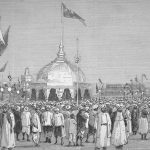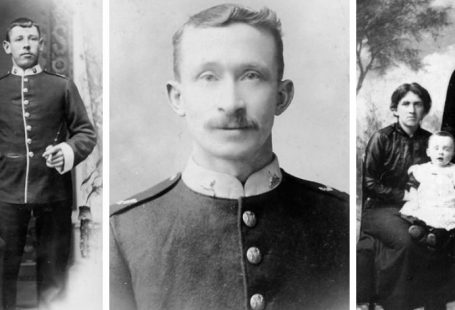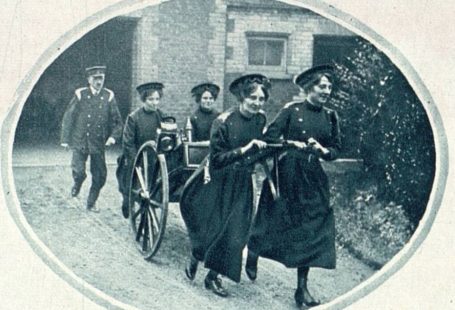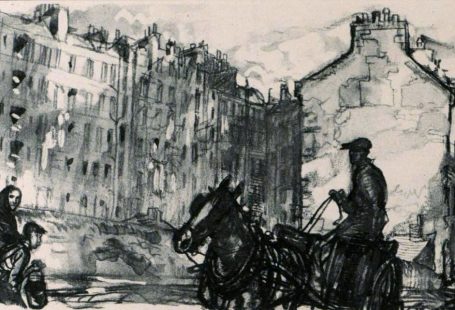This week at The Archive we have added nearly 180 years of historic headlines, with 167,302 brand new pages joining us, spanning the years 1820 all the way through to 1999. We have four very exciting new titles joining us this week too, with additions to our collection of international newspapers, as well as to our Irish and national holdings.
Read on to discover more about our new titles, the updates we have made to our existing publications, as well as one of the nineteenth century’s most notorious murders.
Register now and explore the Archive
We’re delighted this week to welcome the Weekly Dispatch (London) to The Archive. One of the earliest Sunday newspapers, it was established on 27 September 1801 and was edited, printed and published by Robert Bell. Control of the title eventually passed to the Newnes family; but by 1903 the newspaper was at risk of going bankrupt. However, it was bought by publishing magnates Alfred Harmsworth and Lord Rothermere, who turned the Weekly Dispatch‘s fortunes around.
Weekly Dispatch (London) | 14 February 1841
Thus, the Weekly Dispatch became Britain’s biggest Sunday newspaper and was renamed the Sunday Dispatch in 1928. By 1947 it was selling 2 million copies a week, but this had declined in December 1960 to 1 million copies. Ceasing publication in 1961, the Sunday Dispatch then merged with the Sunday Express.
One of the Weekly Dispatch’s most notable headlines was ‘Hanged by a Microscope,’ in relation to the murder of PC Gutteridge in 1927, whose killers were brought to justice via early ballistics science. The Weekly Dispatch was also partly responsible for the first Miss Great Britain contest, which was held in association with the newspaper in 1945. In 1950, it added fuel to the fire of the early flying saucer debate.
We move now to look at two of our new international titles. In association with the British Library, we have been publishing titles which tell the story of the British Commonwealth, reflecting the stark and often confronting legacy of British colonialism (you can read more about these titles here). To this end, we have added the Civil & Military Gazette (Pakistan) to The Archive this week.
Civil & Military Gazette (Pakistan) | 13 August 1884
The Civil & Military Gazette (Pakistan) was a daily English-language newspaper founded in 1872. Published in Lahore, Simla and Karachi, it represented a merger between the Lahore Chronicle and the Indian Public Opinion and Panjab Times. The Civil & Military Gazette is perhaps most famous for being the workplace of Rudyard Kipling, who referred to it as his ‘mistress and most true love.’
Indeed, Kipling’s father (the curator of Lahore Museum) procured the job at the Civil & Military Gazette for him as it was feared that Kipling would not be bright enough for Oxford University. And it was in the Civil & Military Gazette that Rudyard Kipling published his first set of short stories ‘Plain Tales from the Hills.’ He left the newspaper in 1887 to work for its sister publication The Pioneer, whilst the Civil & Military Gazette ran until 1963.
We have another new international title joining us this week, namely the Indian Statesman. This newspaper was launched by Times of India founder Robert Knight, and was merged with the New Friend of India in 1875 to become the Statesman. A daily broadsheet, it absorbed The Englishman in 1927, and is still published in Kolkata to this day. Adopting a centre-right position, it famously went against British government censorship in 1943 to print graphic images of the Bengal famine – demonstrating the disturbing effect of British colonialism and the devastation created by the British Raj.
Indian Statesman | 3 January 1876
Our final new title this week is the Kilrush Herald and Kilkee Gazette. Established in 1877, and published by P.J. Boyle, this newspaper was printed in Kilrush, County Clare, featuring advertisements, local and international news. The market and fishing town of Kilrush is an historic one, listed as a Heritage Town, and is home to one of the world’s oldest yacht clubs (the Western Yacht Club). The Kilrush Herald and Kilkee Gazette appeared every Thursday, priced at two pence.
Meanwhile, we have updates to ten of our existing titles this week. Of particular note are the 54,000 pages we have added to national tabloid the Daily Mirror, which include pages from the late 1990s. We’ve also added a long run of pages to Lloyd’s Weekly Newspaper, another historic Sunday title and the first newspaper to sell a million copies during the Victorian era.
You’ll also find updates to some of our Scottish, Welsh and Irish titles this week. We’ve added new years to the Dundee Courier, the Carmarthen Journal, the Sligo Chronicle and the Tralee Chronicle.
Murder in the Red Barn – the Death of Maria Marten
In April 1828, readers of the Weekly Dispatch (London) would have come across the following headline – ‘Most atrocious and cold-blooded murder’ – with the first line of the article running as follows: ‘The feelings of the whole country will be powerfully excited by the details of a murder almost unparalleled in cruelty and selfish barbarity.’
The murder in question was one that had taken place at the Red Barn, in Polstead, Suffolk, of a young woman named Maria Marten. Maria had vanished from her home in May 1827, reputedly with her lover William Corder. Maria and Corder had had an illegitimate child together, and Corder was fearful that they would be prosecuted by parish officials for this. Maria wanted to marry Corder, so they formed a plan to meet at the Red Barn, and from there they would elope to Ipswich.
Maria Marten | Daily Mirror | 24 October 1948
But Maria never got to Ipswich – instead, she was shot by her lover Corder, who went to London where he married, after burying her body in the Red Barn.
And this murder case became one of the most sensational of the nineteenth century. From the way in which Maria’s body was eventually discovered (her stepmother dreamt where she could be found), from how the murder scene became a tourist trap, the murder in the Red Barn inspired songs, plays and articles, and formed the basis of many Victorian melodramas.
Maria Marten’s murder is dramatised in 1952 | The Sketch | 31 December 1952
The Weekly Dispatch (London) covers this case in detail, and describes how Maria Marten’s body was eventually found:
Probably, from the excitement of her fears, the mother-in-law dreamt twice that the girl was murdered, and buried in the barn; and this being told to the father, he also had a dream of a similar nature…the opinion took such firm hold of his imagination, that he determined to examine the barn…having examined the barn, [he] found a place which seemed to differ in appearance from the rest of the floor; they removed the surface, and discovered a human body, which alarmed them so much, that they both left the place and went to fetch the clergyman, who immediately went and superintended the exhumation of the corpse.
Diagram of the Red Barn | Weekly Dispatch (London) | 27 April 1828
Identifiable by her clothes, (her father recognising her shawl) and her missing tooth, it was found that Maria had been shot. A coroner’s inquest was subsequently held at The Cock public house in Polstead, where William Corder was found guilty, despite the fact that he was ‘personally known’ to many of the jurors.
The Weekly Dispatch (London) goes on to describe the notoriety that Corder’s crime created. As he was being brought from Polstead to the county gaol in Bury St Edmunds, ‘the concourse of the peasantry was so great around the chaise, that it was with difficulty a way could be made for him.’ He was even followed from the village ‘for a considerable distance by crowds of curious people.’
The Weekly Dispatch (London) was highly critical of Corder, citing him as having an ‘unfeeling and wretched heart,’ as he even ate lunch near the spot where he had buried Maria Marten.
Staffordshire Cottage Group remember the Red Barn Murder | The Queen | 25 March 1905
But what is perhaps most remarkable about this case (unthinkable today!) is how the scene of the crime was plundered for souvenirs, as the murder of an attractive young woman took hold in the public’s imagination. The Weekly Dispatch (London) contains this description of how the Red Barn became a tourist trap:
The grave from which the poor victim has been taken is still open…the number assembled to view the spot was immense; and the shot from the gun, which he is supposed first to have discharged at his victim, are all of them cut from the side of the barn, and treated with every other relic that has the slightest connection, as great curiosities; holes had been cut on all sides of the barn to get a sight of the grave; and to prevent further mischief, the barn doors have been judiciously thrown open, and the grave and barn are equally open to inspection.
Meanwhile, pamphlet and book writers were quick to seize a money-making opportunity, for example this ‘Authentic and Faithful History of the Mysterious Murder of Maria Marten’ is being advertised in the Weekly Dispatch (London) in the August of 1828.
Weekly Dispatch (London) | 24 August 1828
Thousands attended William Corder’s execution on 11 August 1828, Corder having confessed to the crime prior to his death. Even whilst he was still alive, stage versions of his crime were being performed, which continued throughout the nineteenth century. In the twentieth century, films and television programmes based on the murder were being produced, but you can find original contemporary accounts of the crime and trial within the pages of the British Newspaper Archive.
Burnley Express | 9 March 1929
New Titles
Title |
Years Added |
| Civil & Military Gazette (Pakistan) | 1884, 1891-1893 |
| Indian Statesman | 1876 |
| Weekly Dispatch (London) | 1820-1829, 1831-1850, 1852-1868 |
| Kilrush Herald and Kilkee Gazette | 1879-1880, 1889-1899, 1901-1919, 1921-1922 |
Updated Titles
This week we have updated ten of our existing titles.
You can learn more about each of the titles we add to every week by clicking on their names. On each paper’s title page, you can read a FREE sample issue, learn more about our current holdings, and our plans for digitisation.
Title |
Years Added |
| Huddersfield Daily Chronicle | 1883 |
| Lloyd’s Weekly Newspaper | 1894, 1901-1912 |
| Dundee Courier | 1989 |
| Cambridgeshire Times | 1872 |
| Carmarthen Journal | 1841 |
| Derby Daily Telegraph | 1990 |
| Daily Mirror | 1994, 1998-1999 |
| Sligo Chronicle | 1880-1891 |
| Marylebone Mercury | 1933, 1935, 1938 |
| Tralee Chronicle | 1881 |
You can keep up to date with all the latest additions by visiting the recently added page. You can even look ahead to see what we’re going to add tomorrow.
















